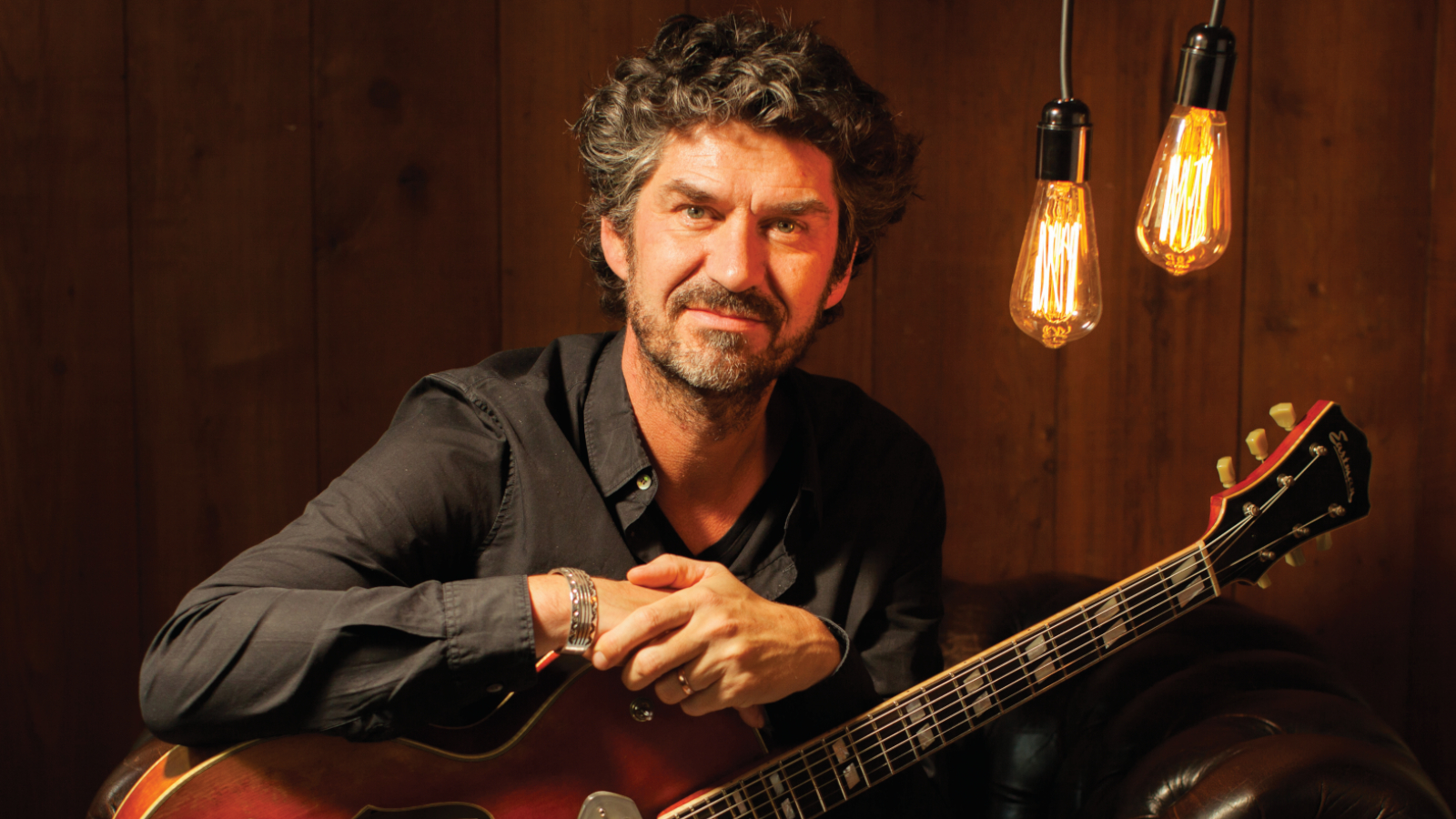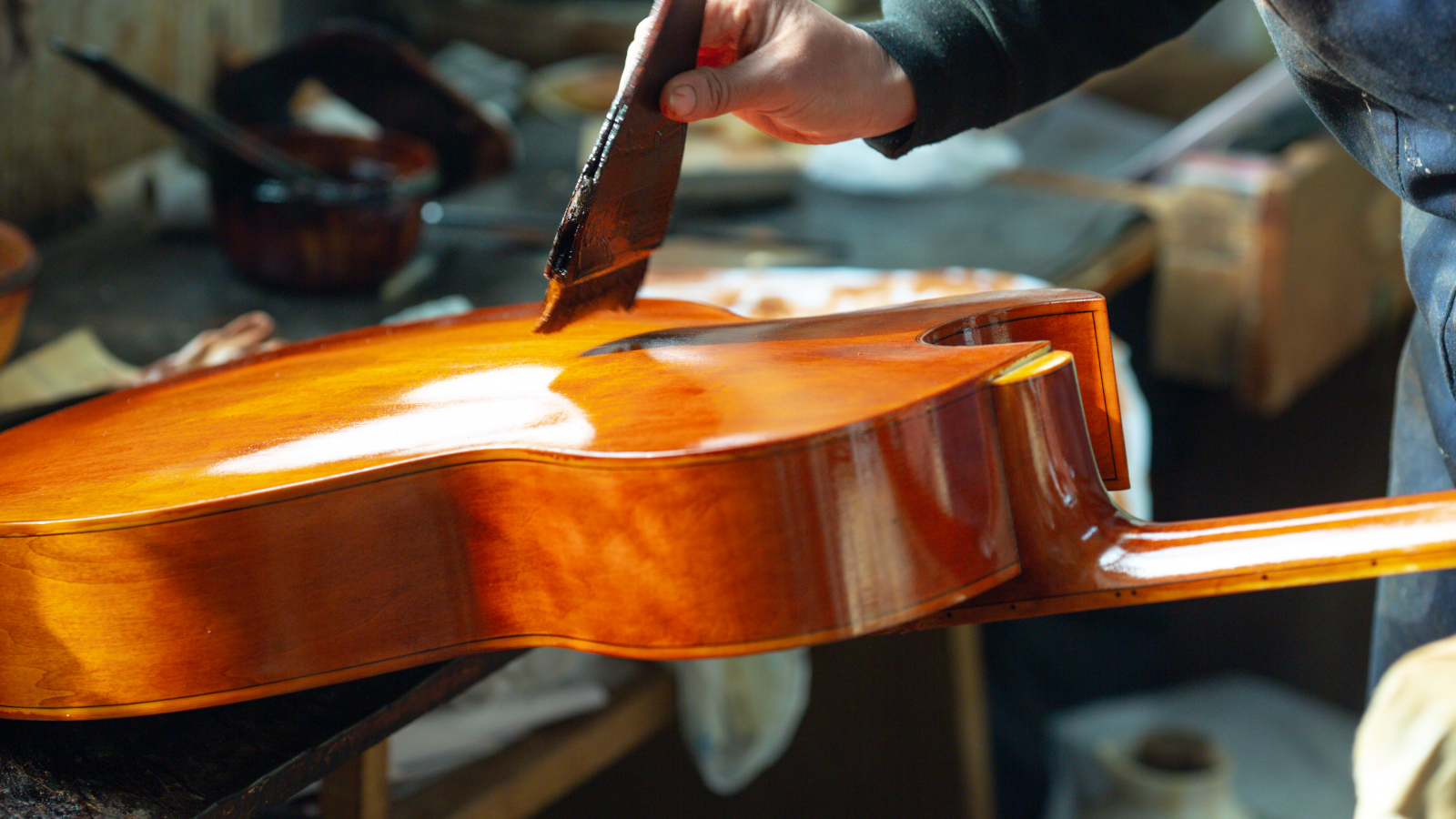“Our First Original Solidbody Electric Design is Coming in Time for Summer NAMM”: the Inside Scoop on How Eastman Keeps Hitting the Mark
The old world meets original design at Eastman Guitars, where every instrument has its own story.

Lift the lid on an Eastman Guitar like the T64/v and T184MX models and questions about their origins will probably go right out the window the moment you take the instrument from the case.
Just as companies like Yamaha, Ibanez, Aria and others helped to establish a new high-quality reputation for Japanese-made guitars in the 1970s and ’80s, Eastman Musical Instruments has shown for several years that guitars made in their Beijing workshop can rival any large-shop producers for quality, tone and playability.
Founded as Eastman Strings in 1992 by Chinese flutist-turned-entrepreneur and Boston University graduate Quian Ni, the company was launched on its fine hand-crafted violins, violas and cellos, and has been making a wide range of acclaimed acoustic guitars and electric guitars since 2004.
We spoke with two prime movers in Eastman’s Guitar division: international sales and product development manager Pepijn ’t Hart and master luthier Otto D’Ambrosio, who are based, respectively, in the Netherlands and Pomona, California.

Many guitarists are fascinated with the story of Eastman’s birth because it helps to explain why this is not just another generic guitar factory. It started with the foundation of fine acoustic classical-instrument making and is still run like a shop that hand-makes all its own instruments.
Otto D’Ambrosio: It’s one of the most amazing aspects of Eastman. Quian has this insatiable appetite to look at something, especially extremely complicated wooden objects that create music, and say, “Oh, that’s not that complicated. We can figure it out!”
And he’s done it with the most complicated of stringed instruments: the violin and cello. And when he wanted to move on, he didn’t decide to go into electric guitars; he went into archtop jazz guitars, which were the most complicated to make.
All the latest guitar news, interviews, lessons, reviews, deals and more, direct to your inbox!

Yes, that’s a very demanding craft. And in some ways Eastman’s trajectory kind of follows Gibson’s, from hand-carved archtops to a wide range of guitars.
Pepijn ’t Hart: There are a lot of similarities between Gibson and Eastman when it comes to mandolins and archtops, because we make much the same instruments. And one of the things that struck me when I started working with Eastman in 2008 was that it’s all built on the Stradivari way.
Stradivari built his violins with a team of specialists, and that’s exactly what we do. We have a lot of workers, both male and female, and they all are more or less their own boss. It’s not that they have to clock in, et cetera; they are paid for what they accomplish. And some are doing fret work, others are doing the necks, and so forth.
Some people have been with us for more than 25 years. If you do something that much, you get so good at it.

What are some of the factors that distinguish the way Eastman makes guitars today?
D’Ambrosio: Back in the early 2000s, I had just finished working with Guild Guitars, and the reason I worked with Guild was that they still did a lot of handwork. There were no CNCs in that factory, in Westerly, Rhode Island, and, as Pepijn said about Eastman, everyone had a dedicated position there.
They were extremely good at it, and they were proud of it. And that was one of the things I saw when going over to these Eastman workshops. It was like an old-school American guitar factory.
But you fast-forward 20 years and the modern guitar factory doesn’t look the same, at all. So that’s one of the reasons why I love Eastman so much. There are people working on these instruments, and they’re passionate about them, and they create beautiful objects with their hands.

’t Hart: At the heart of this company is the Chinese mentality of always seeking to do great work. When Otto and I walk through the workshop and we give compliments and so forth, they always say, “Oh, thank you very much. I will do better tomorrow!”
So there is this really, really strong urge to do the best they can, so they always improve. They never take any suggestion as an insult.

Eastman’s reputation had already been growing in the guitar community when you came out with your varnish finishing process on many models a few years ago, and that feature seemed to take it to the next level for many players. How did that come about?
’t Hart: Otto and I visit the Chinese workshop two or three times a year – although not in the past two years. On one occasion, when we were walking through the workshop, there was an unfinished archtop guitar. I asked the varnish lady [Li Hua Rong], “Can you finish these like you do the violins?” Because the violins were finished in Antique Varnish, and they look like they’re from the 1800s or something. Really good.
She has been doing this for over 22 years and is an absolute master at it. So she asked me to pretend to play the guitar, so she could see where it would age naturally. And that was the first instrument that we did like that: the T58, a big Gretschy archtop with a Bigsby and TV Jones pickups. Otto created some beautiful pickup rings for it. And suddenly we attracted a whole different audience.

Although the Eastman electric line has largely been based around modified and improved renditions of classic models, you’ve also released some totally originally designs, like the Romeo and Romeo LA.
’t Hart: Yeah, Otto came up with Romeo, and in 2020 it was our best-selling guitar, and it was a fully original thinline instrument. In my opinion, Otto is one of the big American designers. He really is. He can create something that is so unique.
D’Ambrosio: But the Romeo would not exist if the workshop were not capable of pulling it off. After 15 years of experience with this shop, knowing that they’re able to do these extremely well-pressed laminates and all this handwork and binding work and neck setting… It’s the only way that Romeo is able to be a product on the market at all.
Is there anything else in the pipeline for original electric-guitar designs from Eastman?
’t Hart: Yes. Our first original solidbody electric design is coming in time for summer NAMM, as the partner to Romeo. Maybe you can guess the name! We’re very excited about it and can’t wait to get it out there.
Visit Eastman Guitars for more information.
Dave Hunter is a writer and consulting editor for Guitar Player magazine. His prolific output as author includes Fender 75 Years, The Guitar Amp Handbook, The British Amp Invasion, Ultimate Star Guitars, Guitar Effects Pedals, The Guitar Pickup Handbook, The Fender Telecaster and several other titles. Hunter is a former editor of The Guitar Magazine (UK), and a contributor to Vintage Guitar, Premier Guitar, The Connoisseur and other publications. A contributing essayist to the United States Library of Congress National Recording Preservation Board’s Permanent Archive, he lives in Kittery, ME, with his wife and their two children and fronts the bands A Different Engine and The Stereo Field.

